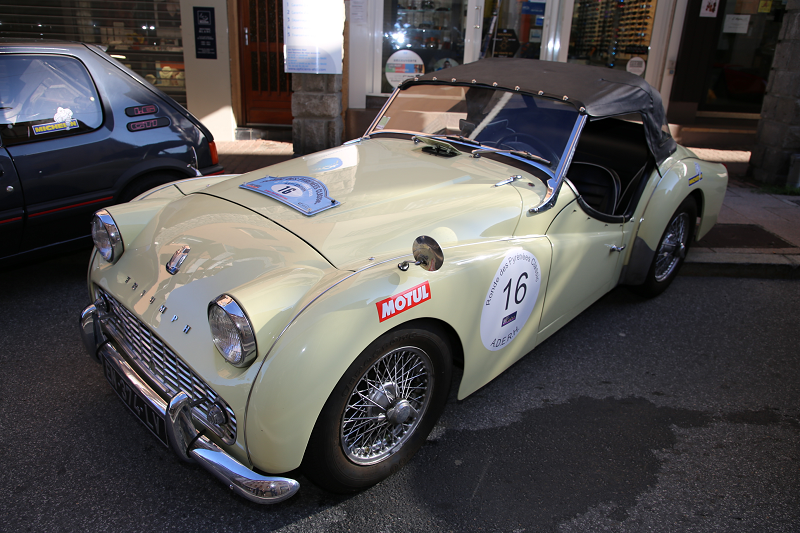Triumph TR3 1963: English cabriolet with 100 HP
The Triumph TR3 is a British sports car produced between 1955 and 1962 by the Standard-Triumph Motor Company of Coventry, England. A traditional roadster, the TR3 is an evolution of the company’s earlier TR2 model, with greater power and improved braking. Updated variants, popularly but unofficially known as the “TR3A” and “TR3B”, entered production in 1957 and 1962 respectively. The TR3 was succeeded by the Michelotti-styled, mechanically similar Triumph TR4.
The rugged ‘sidescreen’ TR, so named for its employment of removable plexiglass side curtains, was a sales and motorsport success. With approximately 74,800 TR3s sold across all variants, the model was the company’s third best seller in the TR range, behind the TR7 (111,500 units) and TR6 (94,500 units) models. The Triumph was campaigned in races, hill climbs, and rallies across Europe and North America, with several outright, team, and class victories to its credit.
TR3
Although the car was usually supplied as an open two-seater, an occasional rear seat and bolt-on steel hard top were available as extras.
The car is powered by the Standard wet liner inline four, a 1,991 cc (121.5 cu in) straight-four OHV engine initially producing 95 bhp (71 kW; 96 PS), an increase of 5 hp over the TR2 thanks to larger SU-H6 carburettors. This was later increased to 100 bhp at 5000 rpm by the addition of a “high port” cylinder head and enlarged manifold. The four-speed manual gearbox could be supplemented by an overdrive unit on the top three ratios, electrically operated and controlled by a switch on the dashboard. In 1956, the front brakes were changed from drums to discs, a first for a British series production car.
The suspension is by double A-arms, manganese bronze trunnion, coil springs and tube shocks at the front, optional anti-roll bar, and with worm and peg steering. Unlike MGs of the same period, the steering mechanism and linkage have considerable play and friction, which increase with wear.
The rear is conventional leaf springs, with solid axle and lever arm dampers, except that the (box) frame rails are slung under the axle. The wheels are 15 inches in diameter and 4.5 inches wide (increased from 4 inches after the first few TR2s), with 48-spoke wire wheels optional. Wire wheels were usually painted, either body colour or argent (silver), but matte chrome and bright chrome were also available.
The TR3’s weight is significantly more than the Morgan +4 and the Porsche 356, but not much more than the MGA and MGB. All except the Morgan, which shares the same engine, are substantially less powerful, as is the Sunbeam Alpine.













